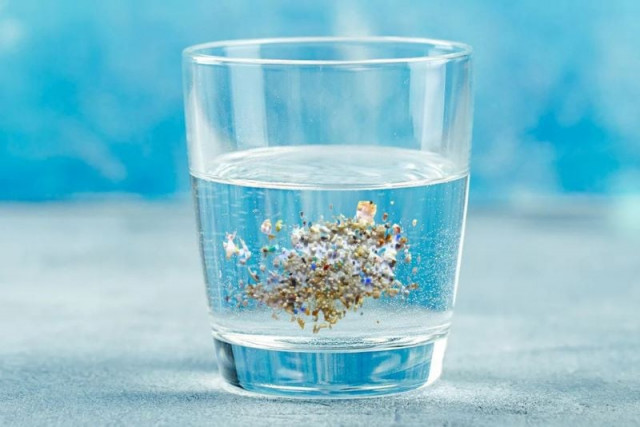“How much microplastic in your drink?” New tool can tell in minutes
Low-cost tool accurately measures plastic released from everyday sources like disposable cups and water bottles

Micro- and nanoplastics have become ubiquitous in our environment, infiltrating our food, water, and even the air we breathe. These tiny particles have been found in various parts of the human body, including brain tissue and testicles.
Now, researchers at the University of British Columbia (UBC) have developed an innovative, low-cost tool that can accurately measure plastic particles released from everyday items like disposable cups and water bottles.
The portable device, which is paired with a smartphone app, uses fluorescent labeling to detect plastic particles as small as 50 nanometres to 10 microns—sizes too minute to be seen with the naked eye. The results are delivered within minutes.
“The breakdown of larger plastic pieces into microplastics and nanoplastics presents significant threats to food systems, ecosystems, and human health,” said Dr. Tianxi Yang, an assistant professor in the faculty of land and food systems at UBC, who developed the tool. “This new technique allows quick, cheap detection of these plastics, which could help protect our health and ecosystems.”
Micro- and nanoplastics originate from degrading plastic materials, such as lunchboxes, cups, and utensils. These tiny particles, especially nanoplastics, are of particular concern due to their large surface area, which makes them more capable of absorbing toxins and penetrating biological barriers in the human body.
Traditionally, detecting these plastics has required specialized personnel and costly equipment. However, Dr. Yang’s team sought to make the process faster, more accessible, and reliable. They developed a small, biodegradable, 3D-printed device containing a wireless digital microscope, green LED light, and an excitation filter.
To measure the plastics, the researchers customized MATLAB software with machine-learning algorithms, which they combined with image capture software. The result is a portable tool that works with a smartphone or other mobile devices to count plastic particles in a sample.
The device needs only a tiny amount of liquid—less than a drop of water—and makes the plastic particles glow under the green LED light in the microscope, allowing them to be visualized and measured. The tool is designed to be user-friendly, whether operated by a technician in a lab or someone curious about their morning coffee.
In their study, Dr. Yang’s team tested disposable polystyrene cups by filling them with 50 mL of distilled, boiling water and letting them cool for 30 minutes. The results were alarming: the cups released hundreds of millions of nano-sized plastic particles, some smaller than one-hundredth the width of a human hair.
“Once the microscope in the box captures the fluorescent image, the app matches the image’s pixel area with the number of plastics,” explained co-author Haoming (Peter) Yang, a master’s student in the faculty of land and food systems. “The readout shows if plastics are present and how much. Each test costs only 1.5 cents.”
Currently, the tool is calibrated to measure polystyrene, but the machine-learning algorithm can be adjusted to detect other types of plastics, such as polyethylene or polypropylene. The researchers aim to commercialize the device for broader applications.
While the long-term effects of ingesting plastic from food, beverages, and even airborne particles are still under investigation, early findings suggest significant health risks.
“To reduce plastic ingestion, it is important to consider avoiding petroleum-based plastic products by opting for alternatives like glass or stainless steel for food containers. The development of biodegradable packaging materials is also important for replacing traditional plastics and moving towards a more sustainable world,” advised Dr. Yang.
The research appeared in Eureka Alert News website.



















COMMENTS
Comments are moderated and generally will be posted if they are on-topic and not abusive.
For more information, please see our Comments FAQ